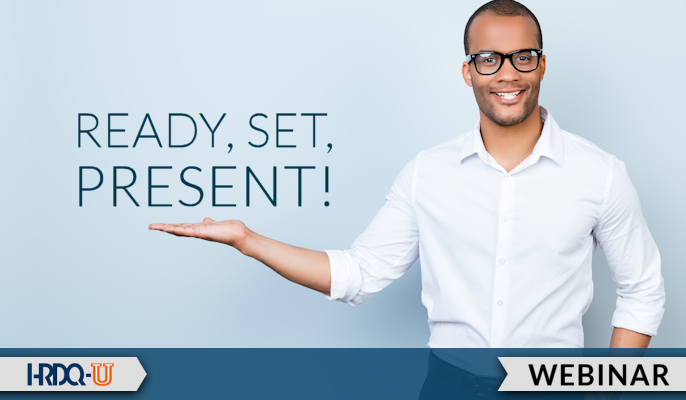
Ready, Set, Present! You can have the best idea in the industry or the most powerful message in the room, but if you don’t present it right, it will fall flat. HOW we present is just as important as WHAT we present.
In this program, we’ll walk through crafting and delivering powerful presentations that immediately grab your audience’s attention and then spur them to engage and act. Notable takeaways include purposeful openings, time management, bringing complex ideas to life, and handling tough questions.
Participants will also walk away with an easy-to-remember solution for “on-the-spot” speaking. Our simple formula helps you confidently and concisely answer questions whether they are asked of you during a large presentation or in a smaller meeting setting.
This live event is free. A recording will be available after the event with an HRDQ-U Membership for Learning Professionals.
Christina Butler transitions 20 years of covering breaking news as a reporter and anchor into professional coaching on presentation skills, development, and media management. Fascinated by behavioral styles, she’s DiSC certified and runs programs for both individuals and groups. As a speaker, she uses her expertise in impression management, relationship building, and media coaching to help her clients in a variety of industries. Virtually, Christina enjoys connecting with clients and audiences on best practices for virtual engagement and presence. She is a contributing author for Best in Class: Etiquette and People Skills for Your Career (2018) and Making the Grade: Presentation Success from Classroom to Conference Room (2019). When she is not speaking or on television, Christina enjoys spending time outside with her husband and two children.
Connect with Christina on Facebook, Twitter, and at www.theprofessionaledgeinc.com.
Training Tools for Developing Great People Skills
This event is sponsored by HRDQ. For 45 years HRDQ has provided research-based, off-the-shelf soft-skills training resources for classroom, virtual, and online training. From assessments and workshops to experiential hands-on games, HRDQ helps organizations improve performance, increase job satisfaction, and more.
Learn more at HRDQstore.com
“The session was well structured, relevant, and well delivered. Contained a lot of information that I can use in my role”
Chris B.
“I learned so much in one hour, thanks for the helpful information!”
Melodie M.
“This presentation was helpful and memorable! I will use the four steps as a framework for creating presentations. Thank you!”
Melissa H.

Sign up for more as a member of HRDQ-U
HRDQ-U offers much of its learning content free to visitors, including live and select webinars, blog posts, and more, with new events and posts shared every week. However, there is much more learning available. You can access our complete library of on-demand webinars and other training events and content by simply signing up.
2 Responses
Great tips…Loved that she shared her personal experiences…You could see she practices what she is teaching….A+++
Christina demonstrated clearly and enthusiastically the tips and tools shared during her presentation. I appreciated her practical approach with easy-to-remember and easy-to-use frameworks (OREOs are not just for dunking in milk!) for making my delivery and the content connect with the audience.